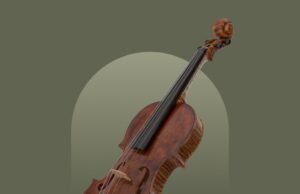John Dilworth
LINAROL, Ventura b. c.1540, Worked 1577-1591 Venice Italy. Son of Francesco Linarol, above. Important early maker of the Venetian school, although at least one reported label places him in Padua c.1585. Surviving instruments include a bass viol, violin, and lira da braccio. The lira da braccio in the National Music Museum, Dakota, USA is a very large and sophisticated instrument with characteristic incurving lower bouts, the ribs and back carved from a solid block of maple. Dated 1563 it is in a fine state of preservation, although with a modern head. Several smaller lira da braccios are attributed to him which have been converted into violas. The Kunsthistorisches Museum in Vienna has a fine early violin of original form dated 1581: the back of mahogany, double purfled, the head with small ‘spurs’ integrated into the profile of the pegbox. Ventura di Francesco / Linarolo In Venetia 1577 1585 Ventura di Franco / Linarol in Padoa, f. Ventura di Francesco / Linaroli fece in Venetia, a. 1591
George Hart
A maker of Viols.
Cecie Stainer
Son of Francesco Linarolo. A maker of lutes and viols in Venice, worked there till 1581.
Was then in Padua: label, “Ventura de Francco Linarol in Padova, f. 1585 ” ;
but probably returned to Venice shortly after, for there is a label ” fece in Venetia, a. 1591.”
Two tenor-viols exhibited in London in 1872 were probably made by him ; they both had a scroll with four pegs substituted for the ancient head with six or seven pegs; the great breadth left between the sound-holes shows that the instruments were originally made for six or seven strings.
Willibald Leo Lütgendorff
Francesco’s Sohn; abeitete bis gegen 1584 in Venedig, scheint dann 1585
für kürzere Zeit nach Padua übergesiedelt zu sein, kehrte aber bald wieder nach
Venedig zurück. Er ist der Bedeutendste aus seiner Familie und nannte sich
nach seinem Vater »Ventura di Francesco Linarolo«. Eine aus dem Jahre 1581
datirte Violine mit einer in den ersten Formen gehaltenen Schnecke und den
charakteristischen F-Löchern besitzt Erzherzog Franz Ferd. v. Österreich-Este
eine herrliche Lira da Gamba vom Jahre 1577 Paul de Wit, eine Tenorgeige
und Discantgamba sah man auf der Wiener Mus.-Ausst. (mit verschieden lautenden
Zettelinschriften). Wenn Valdrighi eine Viola da Gamba von ihm mit der
Jahreszahl 1514 gesehen haben will, so scheint dies auf einem Lesefehler zu beruhen,
